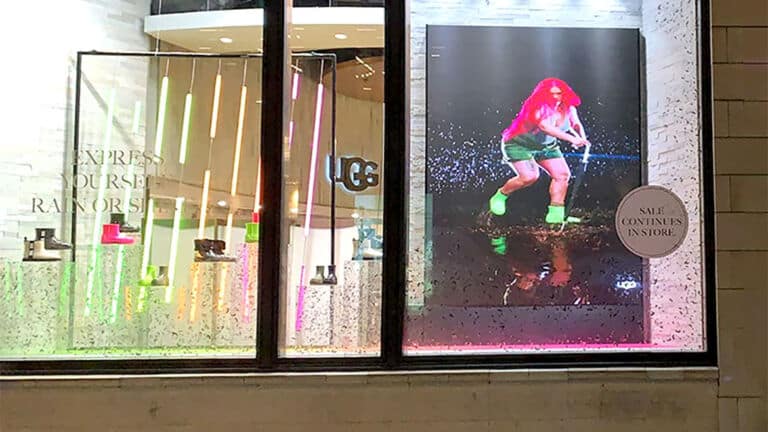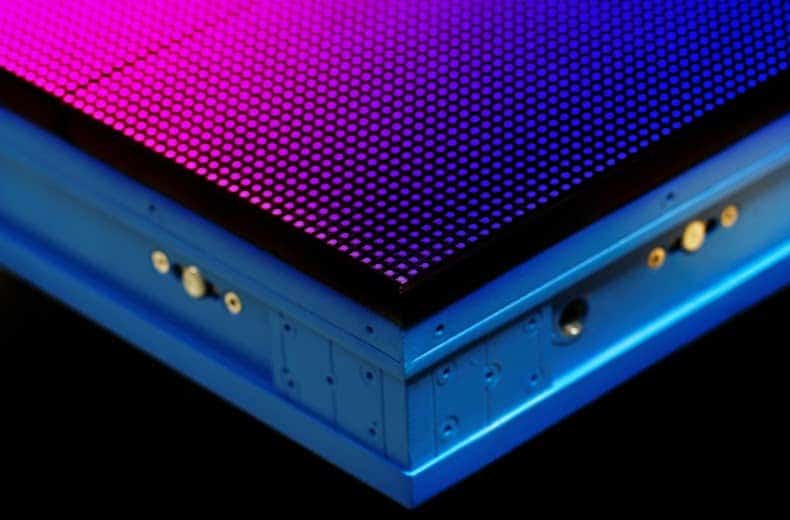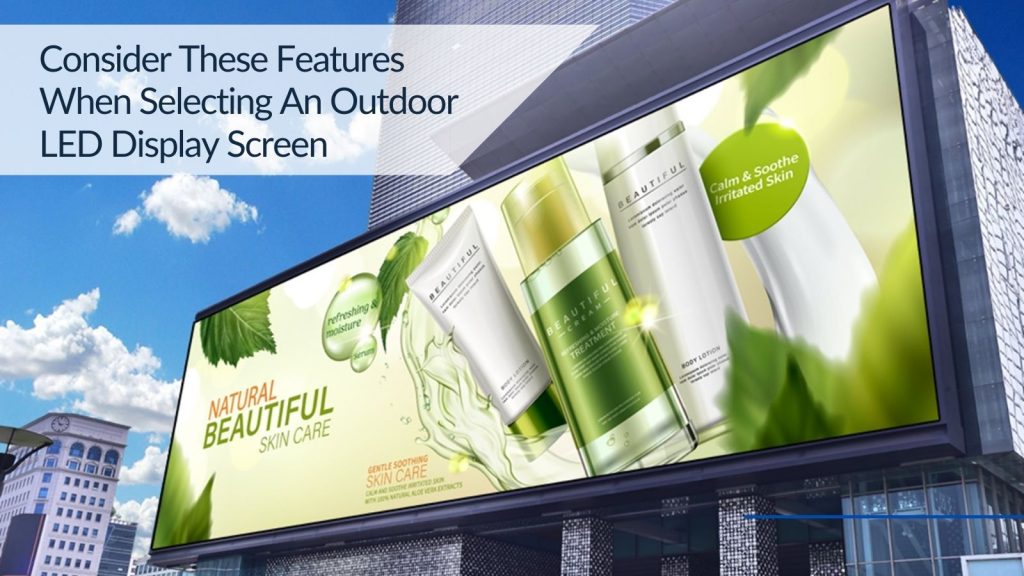Top Advice To Selecting Smd Screens
Wiki Article
What Is The Importance Of Brightness And Contrast Ratio In The Research Of Led Displays?
Brightness and contrast ratio are crucial elements to be considered when looking into LED displays since they impact the brightness clarity, brightness, and overall quality of the display particularly in various lighting conditions. Why are they important?
1. Visibility in Different Lighting Situations
Brightness: The display's brightness is measured in the nits. It is the amount of candelas in a square. millimeter. Outdoor displays, where the ambient light is intense (like direct sunlight) the use of a high-brightness (typically 5,000 to 10,000 in nits or greater) is vital to ensure the display is clear and visible. Indoor displays typically require less brightness (between 500 to 1,500 nits) however, the brightness can be adjusted for different environments.
A high brightness is essential if the display will be installed in brightly lit areas or outside. Insufficient brightness will make the display inaccessible, because the information could be lost or disappear in direct sun.
2. Image Quality and Clarity
Contrast Rate The ratio of contrast is the amount of difference that can be produced between the most brightly lit white screen and the darkest. A greater contrast ratio improves the clarity and sharpness of images and makes colors appear more vibrant. This is especially true of displays that show live video or images with high contrast.
Displays that have high ratios of contrast are better equipped to handle complicated content that has varying brightness levels. Examples include movies, advertisements or live broadcasts. For example, in a low contrast display, dark areas might appear gray, reducing the visual impact of content.
3. Color Accuracy Visual Impact
Color Accuracy and Brightness: Brightness plays an important aspect in the accuracy of color. Displays that are adequate in brightness and consistency can reproduce colors with greater accuracy and is crucial in advertising, branding and other types of content.
High contrast increases the brightness of an LCD display. If two screens have the same nit ratings (or brightness) the screen with the greater contrast ratio will look more vivid.
4. Energy Consumption
Brightness and Energy Efficiency Brightness and energy efficiency: Higher levels of brightness generally need more power. To find the ideal balance between the brightness and efficiency of energy in display screens that are used continuously or are part of a larger-scale installation, it is important to think about both. Advancements in LED technology have led to more efficient displays, which can provide high brightness without consuming excessive energy.
5. Content Versatility
Brightness and Contrast for Various Content Types. Contrast and brightness requirements will vary based on the type of content, for instance static photos or dynamic videos. Text-based content, for example, benefits from high contrast in order to make it easier to read, whereas video content might require both brightness and contrast.
Application: In settings that have a variety of different types of content (e.g. event displays or advertising screens) Adjusting the brightness and the contrast can help the display adjust to the changing requirements of content.
6. User Experience
Brightness Adjustability Displays that permit manual or automatic brightness adjustment can provide superior user experience, as they can adapt to changing lighting conditions throughout the day. It makes sure that the display remains visible and does not cause eye strain.
Contrast and Eye Comfort The high level of contrast can reduce eye stress, making the display more enjoyable over long durations. This is crucial for displays in public areas, events, and retail environments.
Conclusion:
The brightness and contrast ratio are the most important factors that ensure that LED displays function well in the environment they are intended for providing content that is clear, vibrant and easily readable. Whether the display is used outdoors or indoors, and in bright or dim settings they will profoundly influence its overall effectiveness as well as the experience of the viewer. These elements, in conjunction with the efficiency of energy and content requirements you need to fulfill, will help you choose the best display. View the most popular 3d led display for site info including led screen rental, church led wall, led display screen rental, tv led wall, transparent screen, display screens, flexible led screen display, led display transparent, led panel transparent, transparent led screen display and more.

What Is The Significance Of Portability And Weight In Led Display Research?
Portability and weight are extremely important factors to consider when researching LED displays, particularly for certain applications in which ease of transportation as well as installation and the ability to change settings are important considerations. Why these factors matter:
1. Easy Installation and Setup
Weight: A lighter LED display is simpler to move around when it is installed particularly if the display is mounted in an environment where it will need to mount on the roof, walls, or any other structure. The weight of heavy displays requires more robust support systems which can complicate and cost more expensive installation.
Portability Portable displays are easy to set up, tear down and store, which is why they are ideal for temporary installations or events. The lightweight design makes them easy to move, thus reducing the amount of time needed to setup and work.
2. Rental and Staging
Moving frequently In staging and rental markets, where displays are frequently transferred from one place to another, lightweight and portable LED panels are essential. They facilitate faster turnaround times between events, reduce transportation costs, and minimize the possibility of damage occurring during handling.
Modularity LED portable displays have modular designs that make them easy to assemble and disassemble. It is essential to be able to do this in creating custom display designs for various events.
3. Structural Requirements
Support Structures. LED displays that are heavier require more durable and intricate mount structures. This could increase the overall cost and make the display more complex. Contrary to larger displays, simpler, cheaper structures can support them, making them versatile to be used in a variety of environments.
Venue constraints: Certain venues might have weight limit restrictions specifically for ceiling hangings on ceilings and walls. By choosing a light display, you can ensure that the installation will be easily accommodated without breaking these limitations.
4. Transport and Logistics
Shipping costs: The weight of LED displays has an impact directly on shipping and handling fees. Lighter displays are less expensive to ship, particularly for large-scale installations or international transport.
Storage and Handling: Portable and lightweight displays are easier to store and transport with less space, and less logistics. This can be crucial for companies who often transport displays to different locations.
5. Flexibility of Use
Reconfigurability Displays that are lightweight and portable are typically made from modular components that allow the reconfiguration of various sizes and shapes to suit different applications. This is extremely useful in installations that require the flexibility of design is crucial.
Displays that can be used in a variety of settings. They are able to be used in many different settings, from pop-up events for small groups to larger outdoor concerts. This flexibility isn't feasible with larger displays.
6. Safety Considerations
Lighter displays lower the risk of damage and accidents in handling. It is crucial in environments with frequent adjustments or movement of the display.
Compliance: In a lot of cases, safety regulations will dictate the maximum weight for display particularly in public spaces. To avoid issues with compliance it is vital to make sure that the display is in compliance with those specifications.
7. Energy Efficiency
The weight of a display isn't always directly related to power consumption, but light displays are specifically designed to be efficient in energy use. Screens made of portable LEDs may require less energy. This could be beneficial in areas in which electricity is not readily available or where the reduction of operational costs is important.
Conclusion:
The weight and portability are important factors to take into consideration when selecting LED displays, particularly in applications involving frequent movement, temporary installations, or environments with physical limitations. These factors influence not only the ease of installation and transportation but as well the flexibility, security, and overall cost of the display. It's important that you prioritize portability and weight when researching LED displays if your application includes frequent movement, fast setup, or compliance with specific safety or structural standards. Take a look at the top rated led rental screen for blog examples including outdoor led screen, monitor transparent, translucent led screen, led panel transparent, led display screen, outdoor display led, led board, outdoor led panel, led in walls, led panel transparent and more.

How Important Are The Importance Of Cost, Roi And Energy Efficiency When Analyzing Led Displays?
Cost, return on investment (ROI), and energy-efficiency are important to be considered when looking into LED display alternatives. These three aspects directly affect financial viability as well as the advantages over the long term, and the operating expenses. Why each of these factors are important:
1. Initial Cost
Budget considerations. The upfront cost for purchasing LED displays is crucial to the success of any project. It includes not just the price of an LED display, but also expenses for installation, structure of the mounting and other equipment.
Quality vs. Price: Displays with lower costs may appear appealing at first glance but they could be a compromise regarding quality, durability, or features. The initial cost must be considered in relation to the performance and lifespan of the display.
Application: In scenarios where budget constraints are tight and budgetary constraints are a concern, careful analysis of the cost in relation to performance is vital. If you are advertising in the most prominent locations or require a premium display or display, it might be worthwhile to invest in a more expensive model. However, if your environment is less demanding, then fewer options are sufficient.
2. Return on Investment
Revenue Generating: ROI is usually tied to the ability of LED displays to generate income. This could be via advertisements, customer engagement or brand recognition. Displays that offer engaging content and draw attention could boost sales or revenue.
Durability and longevity: Displays of high quality with longer life spans are more durable, and require less frequent replacement and maintenance as time passes. It is possible to cut down on costs in the long run by investing more initially.
Effect of features on ROI like high resolution, a wide view angle, and bright brightness may increase initial expenses but increase the effectiveness of the display. It can also result in a higher ROI by improving audience participation and enhancing visibility.
3. Energy Efficiency
Operational Costs Efficiency in energy use is an important aspect in reducing the cost of operating an LED display. The lower the electricity bill, the better. This is especially relevant for large display or displays that are operational all day long.
Environmental Impact: Energy-efficient displays contribute to sustainability goals by decreasing carbon footprints. This is important to businesses and organizations with a focus on environmental responsibility or that must comply with regulations regarding energy usage.
Long-Term Cost Savings: Although energy-efficient displays are more expensive in price initially, they could reduce the cost in energy bills over the course of their lives, thereby making a bigger impact on the ROI.
Application: When installed in areas that have large electricity bills or in large scale deployments energy efficiency can make a an impact on the overall operating cost.
4. Total Cost of Ownership
Repairs and maintenance. The total cost of ownership comprises both the initial cost of the display, as well as following costs for maintenance and repairs, and any potential downtime. TCOs tend to be lower for displays which have a longer time-to-live and more durability. This helps them to be more economical in the end.
Upgrades and Scalability: Take into account the ease with upgrading or scale up your display. A modular system that is easily expandable or upgraded with minimal cost could be a more profitable long-term purchase.
Displays to be used: If the displays are planned to be utilized for a long period of time in environments such as workplaces or public areas that are crowded The TCO is essential to ensure that investment will remain cost-effective.
The Financing Options
Financing options: A lot of suppliers have flexible financing and leasing plans that make it easy for you to pay upfront expenses for high-quality displays. This is useful to businesses who want to protect their cash flow, but invest in advertising through digital channels.
Lease options also impact the ROI. They let businesses improve their technology and stay current without having to invest an enormous amount of money in advance.
6. Market Competitiveness
Cost is versus. Competition: The price and ROI of your LED display could also affect your position in the market. A better display could enable you to beat your competitors, and draw more customers or clients and so generating a higher return on your investment.
Application In highly competitive sectors like retail or entertainment, investing in higher-quality displays that deliver better ROI can provide a significant edge.
Conclusion:
To determine the value and benefits of an investment in a display with LEDs it is crucial to consider factors such as cost, ROI, and energy efficiency. The performance of the display can be enhanced by balancing initial costs and anticipated returns on the investment. These considerations are crucial for making an informed decision that aligns with your budget, objectives for operations, and long-term strategy. Have a look at the most popular outdoor fixed led display for blog tips including transparent display monitor, advertising tvs, led display screen, church video wall, outdoor digital screens, outdoor led display screen, flexible led screen, advertising tvs, wall tv, flexible led screen display and more.
